Leather quality
Contents
Leather quality
Leather is a natural productand therefore not always equal. There are big differences from species to species. But even within a species are significant differences in skin quality from breed to breed. In addition, there are differences in the gender of the animals, the age, nutrition, feeding and animal keeping. Even between animals of same race, same gender, same age, same nutrition and the same animal keeping the skins are not exactly the same, and even within a skin of one animal the qualitie of leather is deviating.
Differences in quality of cow leather (but also applies to other species):
- Age: The quality of hides from older animals is generally worse than that of younger animals.
- Gender: Females have a more dense fiber structure and a finer grain structure.
- Gender specific activities: The more often a male animal was used for fertilize and the more often calved a cow, the worse is the stability of the fiber structure of the skin. Castrated oxen tend to have finer skin structure..
- Nutrition: Fresh Forage promotes a better quality.
- Animal keeping: If an animal is kept on pastures, the texture of the skin is better.
- Climate: A harsh and cold climate favors a good skin quality.
Leather is used for many different applications. As car leather, for shoes, for leather straps and belts, for leather suits or buttery soft leather gloves. Depending on the usage of the leather, most diverse demands on leather are made. Furniture leather schould be easy to maintain, but should also be soft and warm. Shoe leather should be waterproofed, soft, worm and robust, but also the breathability should remain. A car leather should be easy to maintain and should be impervious to heat, cold and wear.
In all applications, it should not tear, it should be easy to clean, it should not bleach, it schould not smell unpleasant, it should not contain pollutants and it should be durable. All these parameters are summarized as "leather quality" or "leather properties".
In reality, many parameters of the leather properties are in conflict. Leather can`t be buttery soft, robust and easy to clean and care at the same time. Leather can't be paper thin and soft and also tearproof at the same time.
In particular, the sensitivity of especially high quality leather like soft aniline leather of a luxury leather jacket, of exotic leather or of an expensive set of furniture are often misjudged. Especially because the object was so expensive customers expect that it would be no problem to clean and maintain the leather. But the opposite is the case. Such valuable leather has the sensitivity of silk. With regular use the beauty diminishes rapidly, and incorrect cleaning can even ruin the material.
A good leather feels warm and soft, but is also more sensitive.
Particularly car leather is considered to be robust. Most of the vehicle manufacturers require more than 40 quality criteria that must be fulfilled. Hard to fulfill wear tests must be passed. The car leather must be resistant to suntan lotion and bug spray. Many chemicals are not allowed to be used and leather emission is tested. As result, the leather is extremely durable, but no longer soft and warm.
The tanner and the producer of a leather object therefore should establish its own, verifiable quality parameters depending on the desired properties of leather and check regularly. The consideration of these parameters starts with the selection of the animal species and the rawhide. Also during the subsequent processing, the differences in the quality of the individual sections of a skin incl. the possible skin damage when cutting must be considered. Additionally at sensitive leathers there are differences from batch to batch. Through the manufacturing process of leather only a limited amount of leather can always go through and does not behave the same in each run. Often the tanner must intervene in the process by making small changes, which can lead to deviations from batch to batch. Depending on the bandwidth of the established quality limits, differences may be detected.
However, not only of the production quality depends the longevity of a leather. An important element for long lasting pleasure of a of a leather object is the handling of it. If a leather regularly cleaned and maintained and not excessively overused and if the basic rules in dealing with leather are respected, you will prolong the enjoyment of this durable and robust material.
Leather testing - leather properties
To evaluate leather properties there are many different parameters and test methods. For a layman, there are only rough testing options when you want to buy a good and beautiful leather. Some of the criteria can be checked directly as a layman, but when not testable criteria are of interest, ask the questions to the seller of the leather good.
- Look of the leather: A beautiful leather looks very natural and has a defect-free surface.
- Leather grain texture: The grain texture should be good looking and should be as natural as possible. An embossed grain pattern is very uniform, which does not correspond to the natural grain of a skin and embossed leather often feels less natural.
- Softness of the leather: Generally, leather should be pleasantly soft and have a natural feel. But leather shoes or belt leather requires a certain strength.
- Haptic evaluation of leather surfaces: A firm leather, as well as all other leather should feel good. This does not only include the softness. A leather can also be expected to feel blunt or smooth. The more beautiful leather feels, the better is the quality of the leather.
- The leather finish: To protect the leather, it is often useful to apply a binder based finish on the leather surface. The more leather paint layers are applied, the more unnatural feels leather. Is the grain texture sanded before the finish, the leather feels even more unnatural. Also with a film coated leather is usually less high-quality, inexpensive and less natural. But for a patent leather, this effect is an accepted feature.
- Breathability of leather: An advantage of leather over alternative materials is the breathability. But the more a leather is coated with leather color or a film, the lower is the breathability.
- Tear strength and stability of the leather: Good leather is stable and resistant to tearing, whereby suede and nubuck or buttery soft lambskin can not have the same stability as a belt leather. But within the types of leather there are very different qualities and worse leather inside a type of leather tears more easily as a good quality leather. Also sanded leather is usually less stable than full-grain leather.
Criteria of quality leather
To determine whether a leather corresponds to the desired quality requirements, it passes through a series of testing processes. In particular in the automotive industry extremely hight and stict standards are set. But also for furniture, shoe and garment leather minimum qualities are set. In addition, there are statutory testing regulations for harmful substances, which are also a sign of quality.
In the manufacturing of leather the leather quality is constantly checked with all senses and with test equipment.
Although the specific test standards vary by manufacturer and are chosen according to the intended use of the leather, the tested properties are quite uniform.
Further rules on permitted ingredients in leather are regulated by national laws.
Test criteria for the leather quality include (and is regulated in many national and international standards):
- Breathability: The ability to absorb sweat and to submit it to the opposite side.
- Weight: Important e.g. for aircraft leather, because it should weigh as less as possible to reduce fuel costs.
- Thickness of leather: The thickness has an influence on the stability of leather.
- Tensile strenght - Tear strength: If the leather is drawn (for example, more than 200 N per 5 cm).
- Tear force: Leather should not easily tear further (for example, desirable: more than 20 N).
- Adhesiveness of the finish: The colour layers on the surface should not come off (for example, desirable: more than 25 N per 5 cm).
- Flammability and fire retardancy of leather: Important for aircraft, nursing homes, public buildings etc ..
Flame-retardant leather.
- Rub fastness: Dry, wet, alkaline. The surface should not change in friction or wear zones.
- Light fastness: Leather should not fade.
- Flexibility: Desirable: robustness in more than 100,000 cycles. Leather should be extensible, but not baggy.
- Buckling behavior: Leather should not break in folds. Desirable: 30,000 folds without damage.
- Water permeability: Leather should be waterproof.
- Acid and alkali resistance: The leather surface should be resistant to as much as possible chemicals.
- Hydrolysis resistance: Leather should not decay caused by humidity.
- Haptic: Leather should feel accordingly as desired.
- Climate Alternating Test: Leather should be weather-resistant.
- Degree of gloss: Leather should have the desired degree of gloss.
- Back polishing: Leather should not lose the desired gloss level in use.
- Soiling behavior: Leather should not easily get dirty.
- Creaking noise: Leather should not make undesired friction noise when moved.
- Smell: Leather should not smell or it should smell acceptable.
- Leather emission: Leather should not evaporate any substances.
- Alcohol resistance: Drop Test. Resistance to e.g. disinfectants.
- Sea water resistance: Resistance of boat leather to sea water.
Usually material destructive tests are necessary to check the leather quality. - Samples are punched out of the leather.
Due to these stressful testing standards car leather result very similar. Most are monochrome, surface-colored smooth leather.
Standards of quality leather
There are infinitely many national and international standards for leather. Additionally many leather processing companies have extra internal standards. Also the labeling of leather products is regulated by national and international standards.
Overall, the standards on the subject of leather are right and necessary. But there are gaps and weaknesses in the standards.
In Europe exist confusing rules on labeling of split leather. In some standards a clear designation is required and in some not. In vehicles in Germany it may happen that coated split leather is used, without the obligation to inform the customer. As an end user due to the surface copy of a grain leather optics on a split leather can not determine the quality of the material, it would be in the interests of transparent consumer information being obliged to always characterize split leather as such.
Standards are not laws, and judges do not have to follow standards. But in court disputes standards are used to find a verifiable solution. Sometimes different standards are inconsistent. Which standard then has priority is sometimes unclear. Desirable would be a transparent information for consumers in which is clear what material is behind a name, to be able to compare prices and qualities.
Test equipment
To test the various requirements for leather, there are a wide variety of test devices.
- VESLIC rubbing test: The rubbing test checks the dry abrasion and wet abrasion. Wool felts are rubbed dry and wet in a specified number of times over the leather. The wear in daily use and the prone to discoloration is examined.
VESLIC rubbing test.
- Leather flexometer test: This test examines, how long a leather survives an ongoing folding. The wrinkle resistance is examinded.
In particular, shoe upper leather gets buckled during walking and needs a special resistance to breakage. Usual is the "Bally Flexometer" named after the inventor. It is also usded for car leather, furniture leather, clothing leather and other leather applications.
- Abriebtest - Taber-Tester: Mit dem Taber-Tester lassen sich Abriebwiderstände verschiedenster Materialien prüfen. Der Taber Abraser Test ist ein international anerkanntes Prüfverfahren. Die Abriebbeanspruchung wird von zwei Reibrollen erzeugt, die mit einer festgelegten Kraft auf das Prüfmaterial gedrückt werden, welches sich kreisförmig unter den Reibrollen dreht. Dadurch wird eine Kombination aus Schaben, Gleiten, Zusammendrücken, Durchkreuzen und Abrieb simuliert. Die Auswertung erfolgt über eine Differenzbetrachtung.
Abriebtest - Taber Tester
- Martindale method: The Martindale rub test examining the abrasion resistance of upholstery leather.
Martindale rub test - Martindale
The ball plate test simulates selective frictional stress.
- Light fastness - Xenon Test: The xenon test validates the effect of light on surfaces.
Sunlight causes rapid aging of materials. In the test, a xenon arc lamp is used as a radiation source, wherein the filtered spectrum has similarity to the sunlight. The xenon test is suitable for all paints, textiles, plastics etc.
Light fastness test - Aniline leather and semi-aniline are natural and soft, but fade more easily.
The color change can be checked with measuring devices. The scale of the differential is the delta value. There are various delta values. A typical measured value is the Delta DEcmc. The deviation results from the variation in the brightness and the shift in the hue. For examle a leather can turn from bue into green, without noticeable changing the measured brightness. Within a variation tolerance is a delta value of 1. The car industry is even requiering a maximum Delta of 0.5 what is difficult to achieve.
Innerhalb einer Veränderungstoleranz ist ein Delta-Wert von 1. Die Autoindustrie schreibt sogar bis maximal Delta 0,5 Abweichungstoleranz vor, was nur schwierig zu erreichen ist. Oberflächenunregelmäßigkeiten der Narbung oder unterschiedliche Glanzgrade verändern den Delta-Wert. Schon innerhalb einer Fläche kann der Delta-Wert aufgrund der Narbung bis zu 0,5 abweichen.
Bei den folgenden Fotos ergab der Xenon-Test eine Abweichung im Delta DEcmc von 6,6 im verbichenen Bereich.
Der Xenon-Test zeigt die Ausbleichempfindlichkeit. Die Narbenseite ist erkennbar verblichen. DEcmc 6,6,
Anilinleder Tag 0, Tag 16 und Tag 50 - im normalen Sonnenlicht verblichen.
Testmethoden
- Graumaßstab: Um die Farbgenauigkeit zu prüfen, wird oft mit einem genormten Graumaßstab verglichen. Auf einem Graumaßstab sind jeweils Paare von Graustufen gedruckt, die in festen Abstufungen immer stärker abweichend sind. Man sucht dann visuell die Abweichung, die mit dem Farbunterschied der Lederchargen am besten vergleichbar ist. Die maximale Abweichung wird durch Normen oder Qualitätszusagen festgelegt. Die Prüfung sollte bei Normlicht gemacht werden, da bei unterschiedlichen Lichtquellen (Tageslicht, Kunstlicht etc.) unterschiedliche Ergebnisse herauskommen können. Neben dem Graumaßstab gibt es auch Messgeräte zur Farbmessung. Diese geben genauer an, ob die Abweichung in der Helligkeit oder Farbgenauigkeit liegt und wie stark diese Abweichung dann ist. Leder sind ein Naturprodukt und je weniger Farbe auf den Ledern ist, desto schneller kann es zu Chargenabweichungen kommen, aber desto natürlicher ist das Leder. Daher sind Kontrollen wichtig, falls Kunden vom gleichen Leder nachbestellen. Bei den feinen Ledern ist es es oft gar nicht möglich, Leder im exakt gleichen Ton herzustellen, weil die Prozesse nicht so exakt gesteuert werden können, dass immer das gleiche Ergebnis raus kommt. Bei den stärker pigmentierten Ledern ist es einfacher, weil die Farbe die Oberfläche komplett abdeckt und es daher technisch möglich ist, nahezu die gleiche Farbe aufzubringen und das Leder dadurch identisch aussehen zu lassen.
Prüfung der Farbgenauigkeit von Leder mit dem Graumaßstab.
Qualitätsunterschiede
Für den Endverbraucher ist es schwierig, die Qualität eines Leders zu beurteilen. Aber auch Experten sehen einem Leder nicht jeden Qualitätsmangel an. Erfahrung ist nötig, um Qualitätsunterschiede zu entdecken. Viele Qualitätskriterien lassen sich auch nur im Labor prüfen.
Alle Informationen in diesem Lexikon helfen, Leder besser zu verstehen. Für den Möbelkauf gibt es auch einen Leitfaden, was vor dem Kauf geprüft werden sollte.
Grundsätzlich gehen Preis und Qualität Hand in Hand. Ist ein Lederobjekt besonders preiswert, dann ist es i.d.R. auch nicht wertvoll. Markenprodukte sind oft von geprüfter Qualität. Hersteller, die sich offensichtlich um die Qualität ihrer Ware bemühen und die Herkunft und Qualität des Leder beschreiben können, verfügen i.d.R. über gute Qualitäten. Das gilt auch für den etablierten Fachhandel.
Autoleder haben aufgrund derEinkaufsmacht und strengen Qualitätskontrollen der Fahrzeughersteller recht robuste Qualitäten. Das Leder ist zwar nicht besonders weich und warm, aber strapazierfähig. Bei den Möbelledern gibt es stärkere Qualitätsschwankungen.
Wenn das Leder von guter Substanz ist, dann reibt sich bei oberflächengefärbten Ledern mit der Zeit durch mechanische Belastung die Farbe ab. Das Leder selber bleibt unbeschädigt. Ist das Leder aber selber instabil, dann bricht das Leder unter der Fabschicht auf und die Farbschicht kann die mangelnde Qualität im Faserverbund nicht auffangen.
Typische Verschleißspuren bei Auto- und Möbelleder bei guter Qualität.
Typische Brüche im Leder bei schlechterer Lederqualität.
Qualitätsschwankungen
Leder ist ein Naturprodukt. Schon innerhalb einer Lederhaut schwankt die Qualität des Leders je nach Abschnitt. Dazu schwankt die Qualität von Haut zu Haut und von Partie zu Partie. Daher kann es dazu kommen, dass innerhalb eines Lederobjekts unterschiedliche Lederqualitäten auftauchen. Häufig ist das bei Möbeln und bei Bekleidung zu sehen.
Alles Möbelleder, wo benachbarte Flächen unterschiedlicher Qualität sind und daher unterschiedlich schnell gealtert sind.
Diese Möbelleder sind von Fläche zu Fläche durch Sonnenlicht unterschiedlich stark verblichen.
Diese Autokopfstütze wirft je nach Andruck innerhalb einer kleinen Fläche sehr unterschiedlich Falten. Im Randbereich sieht man gut die Losnarbigkeit.
Lederqualitäten der Lederarten und deren Pflegeleichtigkeit
Meist wird davon ausgegangen, dass die beste Lederqualität auch die unempfindlichste und pflegeleichteste sein müsste. Aber wie bei Textilien oder Edelmetallen (Seide ist sehr empfindlich und Gold nicht kratzfest) ist die Empfindlichkeit im höchsten Preis- und Qualitätssegment eher höher. Wertvollere Lederarten müssen oft vorsichtiger und besser gepflegt werden als Preiswertere.
Gegenüberstellung der Lederqualitäten und der Empfindlichkeit bzw. Pflegeleichtigkeit.
Rauleder - Anilinleder - Semianilin - korrigierte Leder - beschichtetes Spaltleder
Anmerkungen:
- Warum sind Anilinleder und Rauleder weniger pflegeleicht? Es sind offenporige Leder, sie sind daher fleckenempfindlicher.
- Warum sind empfindliche Anilinleder bei der Qualität vorne? Weil diese Leder besonders natürlich und warm sind.
- Warum ist beschichtetes Spaltleder nicht pflegeleicht? Es ist instabiler, was durch Pflege nicht verbessert werden kann, und klassische Lederpflege schadet manchen Folienarten.
- Gibt es Ausnahmen von den Regeln?
LEDERQUALITÄT: Ein Anilinleder könnte theoretisch leicht reißen oder einen unzumutbaren Geruch haben oder abfärben. Dann ist es von schlechter Qualität. Ein Glattleder könnte hauchfein angeschliffen sein und vorsichtig geprägt werden und sich wie ein Semianilinleder anfühlen. Dann kann es besser sein als ein normales, pigmentiertes Glattleder. Aber meist trifft Regel zu. Anilinleder sind teurer, weil Häute ohne Hautschäden selten sind. Daher wird sich mehr Mühe bei der Herstellung des Leders gegeben. Glattleder werden meist angeschliffen und geprägt, damit auch schlechtere Häute mit Fehlern verwendet werden können. Solche Häute wirken dann künstlicher und billiger. Somit gibt es Ausnahmen von der Regel der Grafik, aber diese sind selten, sollten aber bei einer Prüfung berücksichtigt werden.
PFLEGELEICHTIGKEIT: Entsprechen die Leder den üblichen Qualitäten dieser Lederarten, dann treffen die Angaben zu. Ist aber eine Zurichtung wasser- oder fettempfindlich, kann sich diese empfindlicher verhalten als die sonst empfindlicheren Lederarten. Das kommt aber selten vor.
- Fazit: Semianilinleder und pigmentierte Glattleder sind die goldene Mitte für Leder im ständigen Gebrauch. Sie sind komfortabel, natürlich und pflegeleichter als die restlichen Lederarten, kosten aber auch etwas mehr. Im preissensiblen Bereich sind korrigierte Leder eine gute Wahl.
Additional information
- Chrome VI - Chromium VI
- Basic rules when dealing with leather
- Typical age-appropriate leather damages and atypical due to quality problems occurring leather damage












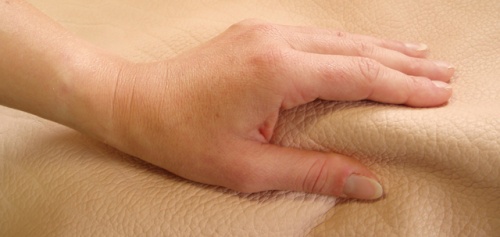
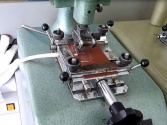
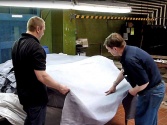
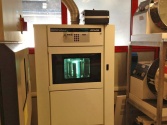

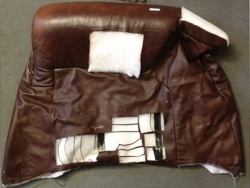
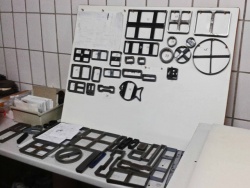





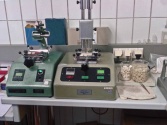
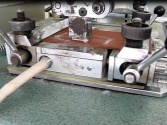
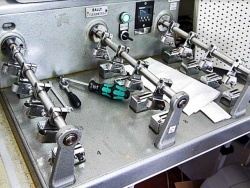
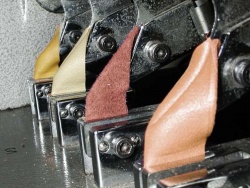
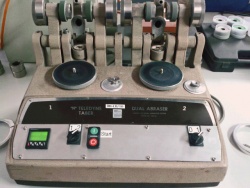
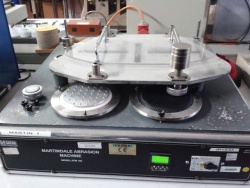
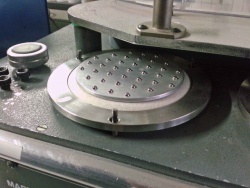
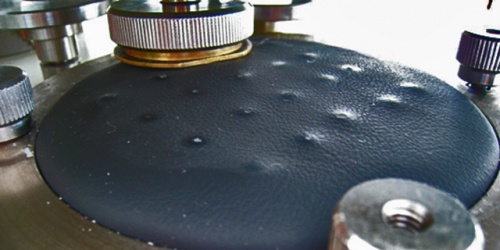
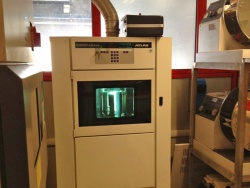
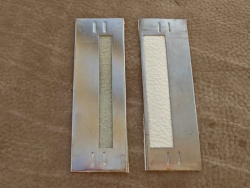
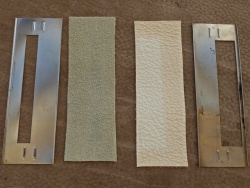
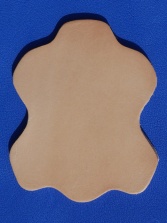
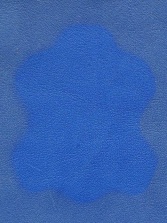
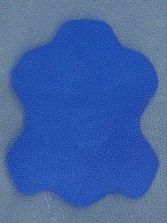
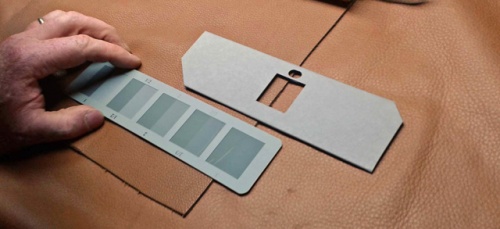
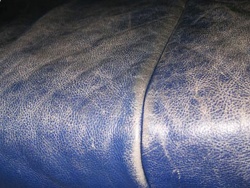
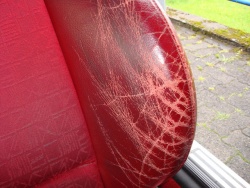
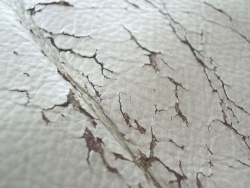
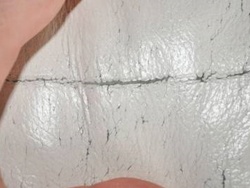
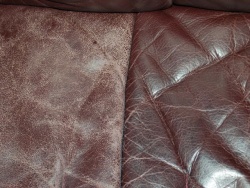
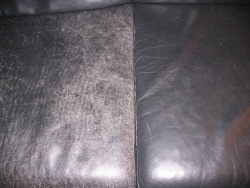
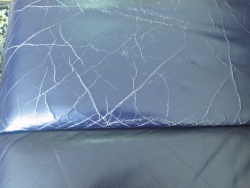
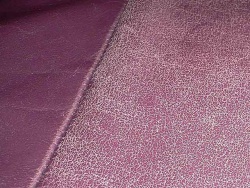
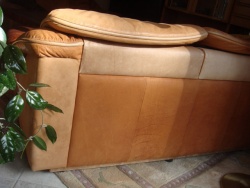
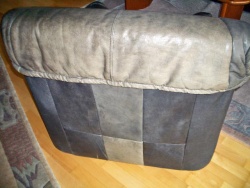
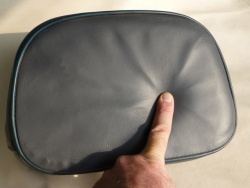
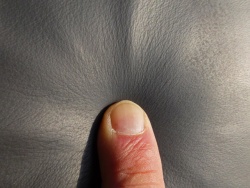
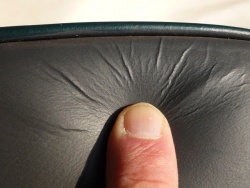
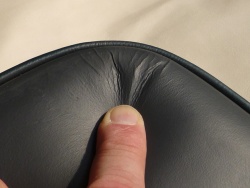

 a kotori web solution
a kotori web solution